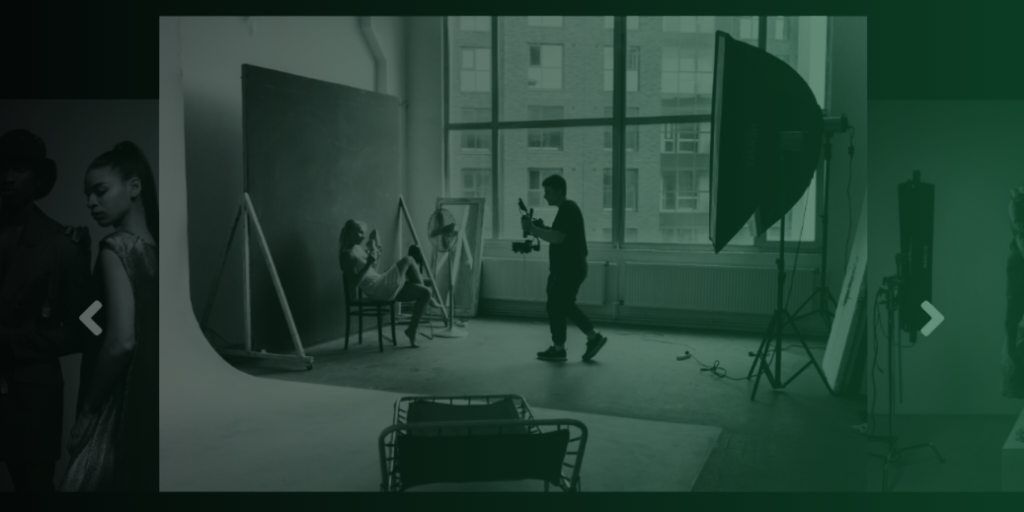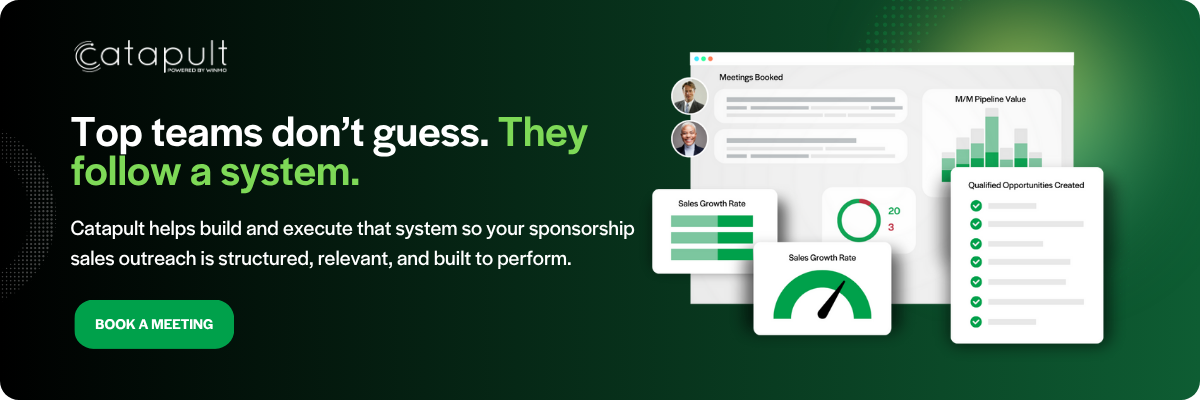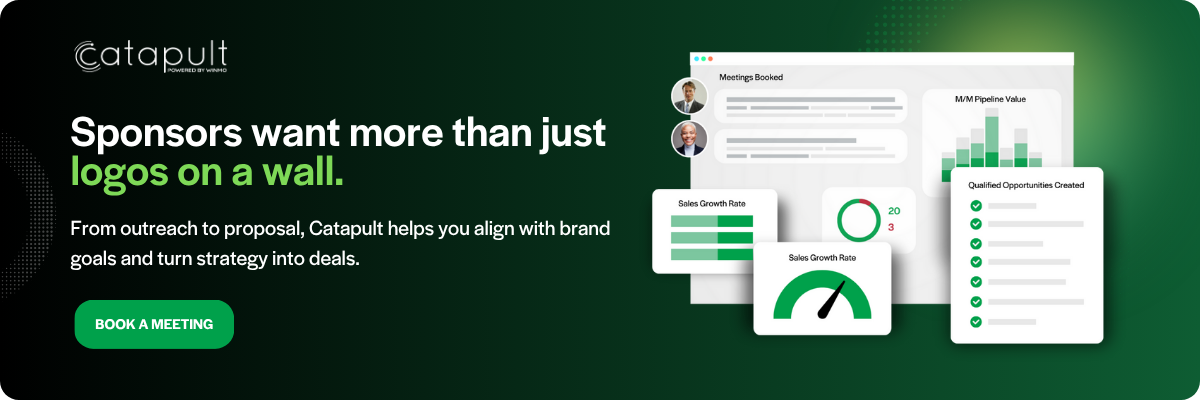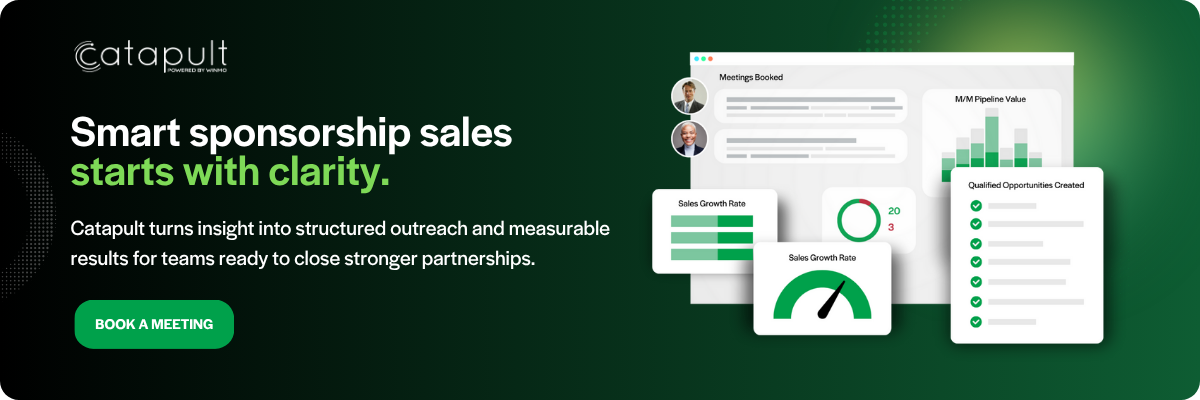Sponsorship sales is a different game than it was even a year ago. Brand marketers are under pressure to defend every dollar, and the old playbook, leading with inventory, touting impressions, hoping a logo gets it done, isn’t getting deals across the line.
Sponsors expect rigor: clear connections between what you’re offering and the results they’re measured against. It’s why 63% of brands name ROI measurement as their biggest challenge. And why so many proposals stall before the first meeting.
Your sponsorship sales strategy has to position your opportunity as a path to business outcomes that sponsors actually care about. Keep reading for a practical framework you can use to build outreach, messaging, and proposals that speak directly to sponsor goals and move deals forward faster.
The Shift in Sponsorship Strategy: Why Sponsor Alignment Matters
Sponsorship spend is still growing, but the criteria for value have changed. Brands are focused on measurable outcomes: brand lift, engagement, leads, and sales. Exposure and visibility still matter, but only if they support a specific business objective.
Most pitches still lead with inventory. A list of assets. Logo placement, signage, impressions, package tiers. Without context, it’s unclear how any of it connects to what the sponsor needs to achieve.
52% of sponsors report being dissatisfied with the ROI of their current partnerships. The issue isn’t the platforms or the audiences. It’s the lack of alignment between what’s being offered and what the brand is working toward.
Sponsor alignment starts with identifying the outcome that matters to the buyer. The proposal then shows how each element of the opportunity supports that objective. This shift is now the standard. It’s how successful sellers build relevance and move deals forward.
Decoding Sponsor Goals: How to Align Sponsorship Sales with What Brands Actually Want
A strong sponsorship sales strategy starts with clarity on what the brand is trying to accomplish. Different sponsors enter conversations with different objectives, and your ability to align with those priorities is what moves deals forward.
Most goals fall into four categories, and each one changes how your offer gets evaluated:
Goal 1: Brand awareness
Sponsors prioritizing awareness want reach and visibility with a defined audience. They’re often introducing a brand, expanding into a new market, or reinforcing presence in a competitive category.
Signals to watch for:
- Entering a new region or launching nationally
- Supporting brand-level campaigns or seasonal pushes
- Building presence in a crowded space
What they’re measuring:
- Impressions and reach
- Share of voice
- Brand recall or sentiment lift
Where to focus:
- Audience scale and fit
- High-visibility placements
- Media amplification or extended exposure
Goal 2: Audience engagement
When engagement is the priority, sponsors are looking for platforms that capture attention and spark interaction.
Signals to watch for:
- Campaigns built around content or experiences
- Activations tied to cultural moments or events
- Interest in younger, digital-native audiences
What they’re measuring:
- Social sharing and interaction
- Video completions or click-throughs
- Participation in experiences or branded content
Where to focus:
- Interactive formats that encourage action
- Engagement benchmarks and creative execution
- Clear links between audience behavior and brand outcomes
Goal 3: Lead generation and conversion
Sponsors focused on performance want measurable demand. They’re looking for qualified traffic, tracked conversions, and proof that your platform impacts revenue.
Signals to watch for:
- Product launches tied to pipeline goals
- High-stakes sales quarters
- Marketing teams under pressure to drive results
What they’re measuring:
- Form fills and qualified leads
- Attribution to CRM activity or sales pipeline
- Conversion rates and cost per lead
Where to focus:
- Lead capture and attribution methods
- Integration with sales or marketing tech
- Results-focused positioning and case studies
Goal 4: Thought leadership
Sponsors pursuing thought leadership want credibility and influence in a specific category. They’re investing in association (not awareness).
Signals to watch for:
- Targeting senior decision-makers
- Elevating executives or internal subject-matter experts
- Shaping category perception or narrative
What they’re measuring:
- Executive visibility
- Content engagement among niche audiences
- Brand perception within key verticals
Where to focus:
- Curated formats that convey authority (interviews, keynotes, panels)
- Audience access and quality, not just quantity
- Alignment with brand values, voice, or expertise
What Successful Sponsorship Sales Teams Do That Others Don’t
The highest-performing teams follow a process. They aren’t chasing volume or relying on personal connections. They succeed because their sponsorship sales strategy is consistent, built around sponsor goals, and structured to scale.
Here’s what sets them apart:
1. They lead with sponsor goals, not an asset list
Top teams don’t guess what matters to the sponsor; they lead with research. Every message is grounded in brand context and framed around a marketing objective.
How they operate:
- Identify brand priorities before sending outreach
- Use sponsor objectives to shape messaging and meetings
- Use the brand’s goal to shape the entire proposal, mapping assets to outcomes and building a story around results.
This creates immediate relevance and builds trust early.
2. They personalize without losing momentum
Effective personalization is baked into the system. It’s not created from scratch for every opportunity.
How they operate:
- Use modular messaging frameworks based on category or campaign goals
- Adjust outreach by vertical, timing, or brand activity
- Set up workflows to track public signals like launches, leadership changes, or budget cycles
Their structure allows for high-quality outreach at scale.
3. They review and improve messaging continuously
Strong teams measure what matters and apply it. Each cycle sharpens messaging, positioning, and timing.
How they operate:
- Measure performance beyond open rates; track replies, meetings, and movement
- Review message effectiveness by industry, persona, or sponsor goal
- Document what works and apply insights to future campaigns
This kind of iteration strengthens every part of the sales motion.
4. They prepare with research and context
Effective outreach reflects the brand’s world. These teams don’t rely on guesswork or generic narratives.
How they operate:
- Research brand activity, marketing strategy, and current initiatives
- Reference recent campaigns, product shifts, or market signals
- Build brand sponsorship proposals that align with known goals and audience needs
Their relevance is the result of clear preparation.
Turning Sponsor Goals into a Tailored Sponsorship Sales Strategy
Once you’ve identified the sponsor’s objective, the next step is translating that into a sales strategy that speaks directly to business outcomes.
Great sponsorship sales happen when your message reflects the brand’s actual objectives and connects to real results. That’s how you move beyond a pitch and into the strategy conversation
Here’s how top teams translate sponsor priorities into goal-aligned, high-performing outreach.
1. Identify brand priorities through market research
Before any outreach, dig into what the brand is working toward right now. Look beyond surface-level marketing to find signals that point to their strategic direction.
Where to focus:
- Recent brand sponsorships or campaign rollouts
- Product launches, seasonal promotions, or M&A activity
- Investor reports, earnings calls, or public performance pressure
- Leadership changes or team expansion (marketing, growth, brand)
- Trade press, LinkedIn activity, and category news
This kind of research gives your outreach immediate relevance. If you reference a current initiative or market shift, you’re providing context.
2. Translate your assets into sponsor outcomes
Don’t send an inventory sheet. Show how what you offer supports what they’re solving for.
Every asset should be tied to a measurable result: reach, engagement, lead capture, or positioning. Most proposals fall short when the value is unclear.
Example translations:
- Signage → “Targeted brand exposure to support campaign visibility”
- Branded content → “Engagement that extends your story across channels”
- Onsite activations → “Hands-on interactions with qualified audiences”
- Thought leadership integrations → “Executive positioning tied to credibility and category influence”
When the framing leads with business impact, you’re selling a solution instead of real estate.
3. Tailor your strategy by category and calendar
What a sponsor needs in Q1 isn’t what they need in Q4. A B2B tech buyer isn’t measuring success the same way as a CPG brand. Your outreach should reflect both.
By vertical:
- CPG: Prioritize reach and frequency
- SaaS: Emphasize lead generation and CRM-ready data
- Media: Focus on interaction and brand integration
- B2B/Enterprise: Lead with positioning and executive access
By timing:
- Q1/Q2: Brand launches, category reset, top-funnel awareness
- Q3: Event activation, cultural moments, fan engagement
- Q4: Pipeline acceleration, holiday campaigns, conversion
Match your message to the moment, and your offer becomes timely instead of generic.
4. Evolve your messaging through data and testing
The best-performing teams treat messaging like a campaign, not a one-off. They track what’s working, test new angles, and refine over time.
What to monitor:
- Subject line and open rate trends
- Reply quality and meeting conversion
- Performance by industry, campaign, or job title
Instead of rewriting from scratch every time, create modular outreach components you can test and improve. The more feedback you gather, the more your messaging becomes a strategic asset.
Conclusion: Build a Sponsorship Sales Strategy Sponsors Actually Want
Sponsors are still investing, but not in generic exposure. They’re focused on partnerships that support measurable business outcomes and align with current objectives.
At Catapult, we help teams build sponsorship sales campaigns that reflect brand priorities, align with marketing goals, and perform at scale. That includes uncovering sponsor focus through research, crafting relevant outreach, launching structured campaigns, and using performance data to improve results.
Ready to see how that works in practice? Book a meeting and let’s get started.
Look at recent campaigns, product launches, seasonal timing, and executive messaging. Use sources like press releases, investor calls, LinkedIn, and trade media. These signals reveal what the brand is prioritizing, even if they’re not saying it directly.
Yes, but keep it focused. A single sponsorship strategy might support both awareness and lead generation, but each asset should be mapped to a specific sponsor goal. Clarity builds credibility.
You don’t need to start from scratch every time. Build modular messaging by vertical or sponsor goal, then customize the open based on brand activity. This keeps your sponsorship sales outreach relevant without slowing you down.
Track more than opens. Pay attention to reply quality, meeting conversion, and win rates. Watch which sponsorship goals resonate by industry or buyer type, then evolve your messaging based on what actually moves deals.




